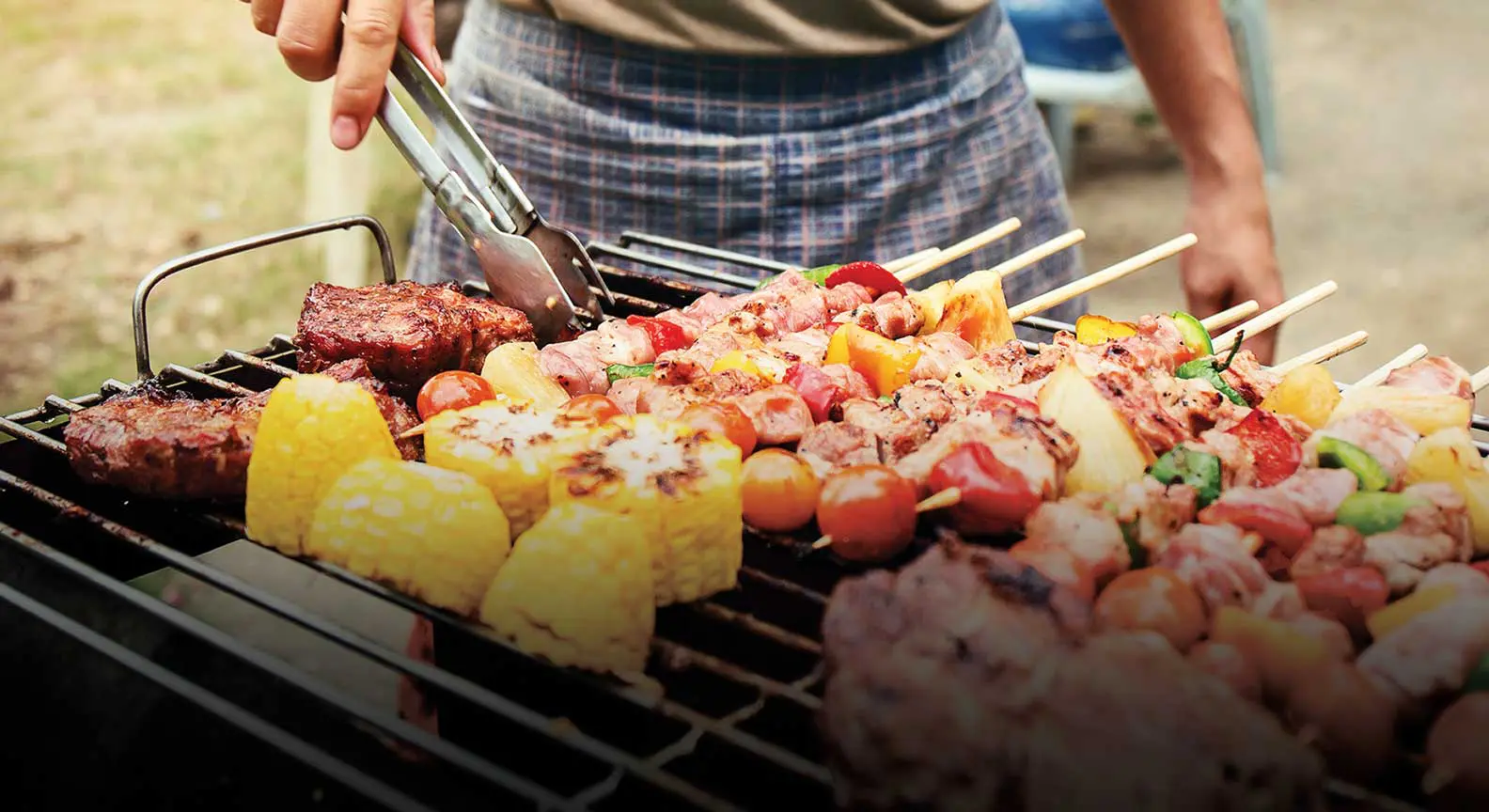Be a Grill Master … the Safe Way!
By MS. DARA MARLAR, STAFF WRITER
Using the grill for a family barbecue is a favorite American summer pastime. Most people do not think about safety when grilling, but a grill fire can start easily and spread quickly. According to the National Fire Protection Association, gas and charcoal grills are involved in about 10,200 home fires per year. These outdoor cooking safety tips will help keep your home and family safe this summer while enjoying the sun!
LOCATION, LOCATION, LOCATION
Only use a grill outside, in an uncovered area. It might be tempting to grill in your open garage, under the shade of a tree, or on a covered porch, but grills need proper ventilation and space to ensure safety.
Keep grills at least 10 feet from your home or other structures. Most grills are set up just outside the back door, next to the porch railing. This can be very dangerous. Grills placed too close to your home or other wooden structures can heat up nearby materials, which can then ignite.
Grills should be used on a flat, level surface. Grills placed on slopes or uneven surfaces can easily tip over and start a fire.
WATCH WHAT YOU WEAR
Do not wear long sleeves or other items that dangle. These can easily catch fire if they get too close to the open flame.
Keep apron strings tied back. If your apron strings are long, they can fall too close to the flames and catch fire.
KEEP SAFETY ITEMS NEARBY
While starting your grill and cooking, keep a spray bottle of water on hand. Flare-ups are a common occurrence on grills when fat drips from meat as it cooks. If left to “burn out,†as many people do, the flare-up can become a full-blown grill fire and spread. Keeping a spray bottle near the grill allows you to safely extinguish any small flames before they become a real issue.
Always have a fire extinguisher within reach. If a fire does break out, having a small, point-and-spray fire extinguisher allows you to put the fire out quickly, keeping your home and family safe.
START, COOK, AND FINISH SAFELY
Check for leaks. In a gas, propane, or natural gas grill, thoroughly check the gas line or tank and all connections to ensure they are free of leaks before use.
Ensure your grill lid is open when you start it. While this is almost necessary when using a grill you have to light by hand, gas grills with ignitors can cause large fires when started with the lid down. The inside of the grill fills with too much gas, and then, when the ignitor is lit, it can cause a small explosion.
Never leave the grill unattended. Anytime a live fire is left unattended, it becomes a safety and fire hazard. If you must leave the grill, ensure another adult is around to watch it while you are away.
Clean your grill after each use. Cleaning your grill after each use removes grease left behind that can start a fire.
Cool off your coals. If using a charcoal grill, ensure coals are completely extinguished and cooled down before placing them in a metal can with a lid.
FOOD SAFETY
While fires are a genuine hazard when grilling, undercooked food and cross contamination can cause food poisoning or other unwanted sicknesses for you and your family. To avoid food poisoning from grilled foods, follow these guidelines:
- Do not use the same utensils for raw chicken and seafood as you do with other raw meats.
- Do not thaw foods at room temperature. To prevent harmful germs from multiplying, thaw food in the refrigerator, in cold water, or in the microwave.
- Always marinate food in the refrigerator, not on the counter or at room temperature.
- Use a food thermometer to ensure meat is cooked thoroughly to eliminate harmful germs.
- Always use the U.S. Department of Agriculture’s Food Safety Guidelines for the minimum internal temperatures when cooking meats, as shown in the following list.
- 145°F—whole cuts of beef, pork, lamb, and veal (then allow the meat to rest for 3 minutes before carving or eating)
- 145°F—fish
- 160°F—hamburgers and other ground beef
- 165°F—all poultry and precooked meats, such as hot dogs

